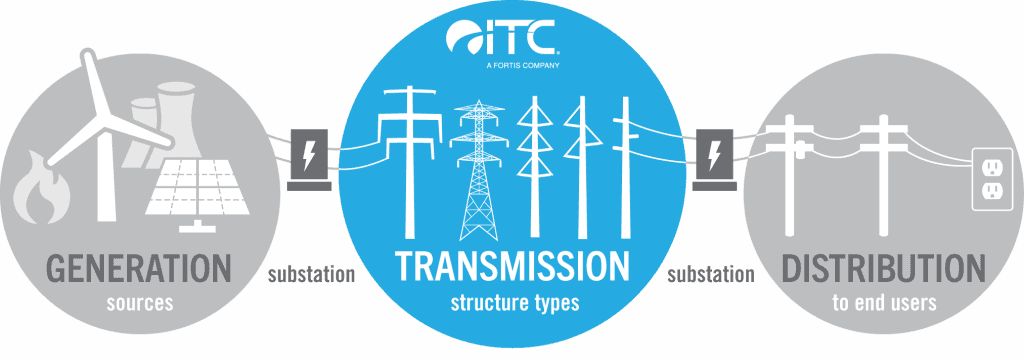DETROIT – Utility work comes with numerous risks. In fact, it’s one of the 10 most dangerous occupations. Heights, power tools, and electricity all pose potential hazards to utility workers. Between 30 to 50 workers for every 100,000 lose their lives, while numerous others suffer severe injuries from electrical burns or mechanical trauma.
Utility workers are under considerable risk on the job, whether operating overhead, underground, or in the streets, in often-unstable weather conditions. Therefore, safety should be a top priority for utility companies and workers operating with utility equipment. Here are five steps to enhance safety at the workplace.

Wear PPE
Personal protective equipment such as masks, gloves, and glasses also plays a significant role in workplace safety. Inadequate PPE is a cause of a staggering number of utility worker accidents.
Workers should never wear clothes that could combust, burn quickly, or stick to their skin in a fire. Instead, the employer provides fire-retardant uniforms that can decrease the likelihood of deadly burns in the case of an electrical or thermal fire. Moreover, if working close to electric arc hazards, wearing equipment with a good arc rating is necessary to prevent electrical shocks. This means that the clothes have been tested for exposure to an electrical arc and assigned a value according to their performance.
Work With Quality Machinery
While it might seem like a good idea to trim the budget, buying equipment from less established manufacturers just because it’s cheaper can have serious consequences. Not only there’s risk of the equipment being faulty, but it may also be harder to maintain. Therefore, the employer must provide high-quality machinery to ensure workers’ safety. You can click here to look at quality crane and utility equipment which is fully serviced and inspected by factory-trained technicians.
Be Mindful of the Weather Conditions
Utility workers do most of the work outside. So, they are exposed to different weather conditions, from bright sunlight to harsh winds and pouring rains. Therefore, they need uniforms that keep them both safe and comfortable. The uniforms should be compatible with every season and weather conditions.
For example, workers must have a reflective vest and proper lighting on the worksite if working on a busy road during a foggy day. They should have warmer gear on winter days to prevent hypothermia, frostbite, and other conditions. Similarly, they will need breathable clothing for warmer days to avoid overheating, dehydration, fatigue, and heatstroke.
Avoid Slips and Falls
Falls from heights are the most common pitfall in the utility industry; they represent nearly 40% of all such incidents. Therefore, OSHA requires employers to provide updated fall protection systems to decrease the occurrence of fatal falls. These include a guard rail and toe-board around every raised open-sided floor or platform.
Moreover, employers should provide each worker with personal fall arrest systems such as harnesses, ropes, and boots. Before using these, employers need to ensure they are in excellent working condition. They should also be aware of the working site surrounding. Finally, it’s good to check for any tripping and slipping hazards like loose power cables or miscellaneous tools.
Prevent Electrocution
Electric shocks and electrocution are two of the most common dangers utility workers face. The employer should endeavor to prevent these mishaps by implementing suitable electricity safety features. Failure to provide the proper equipment, clothes, or rules for utility personnel could result in major electrical accidents and even death.
On the other hand, the right equipment can protect employees from coming into contact with electrified parts. In addition, workers should also know where the overhead and underground power lines are located to avoid accidental contact. Moreover, the wires and conductors should be adequately covered. These provide a barrier to the electrical current’s flow, helping the workers do their work safely. Pay closer attention to site hazard safety by choosing the right equipment.
Report Workplace Hazards
Employer negligence is one of the main reasons for employee injuries. From training utility workers to properly containing dangerous substances, every company has a responsibility to follow standards and regulations imposed by OSHA.
If the worker detects a working hazard or a violation of the OSHA regulations, they should alert the employer. Common safety violations include lack of PPE or fall protection, unsafe ladders, and lax hazard communication standards. If the company ignores the issue, you can file an anonymous complaint with OSHA.
Final Thoughts
Working in the utility industry can present a hazardous daily environment. When not appropriately managed, utility equipment can gravely injure or even kill workers. Fatal workplace accidents can lead to the loved ones of the deceased seeking legal advice to pursue a compensation claim against the company. For example, seeking advice from a Utah wrongful death attorney. This could prove extremely costly for the company, so improving safety to prevent accidents from happening in the first place is the best course of action. Staying safe is a process that requires dedication from both the employer and worker side. Following these tips can help create a safer workspace and prevent accidents.
Bio: Paul Williamson is a writer and marketing manager who helps companies develop quality content around a wide range of topics. He aims to create content that provides educational and helpful information to the readers.







